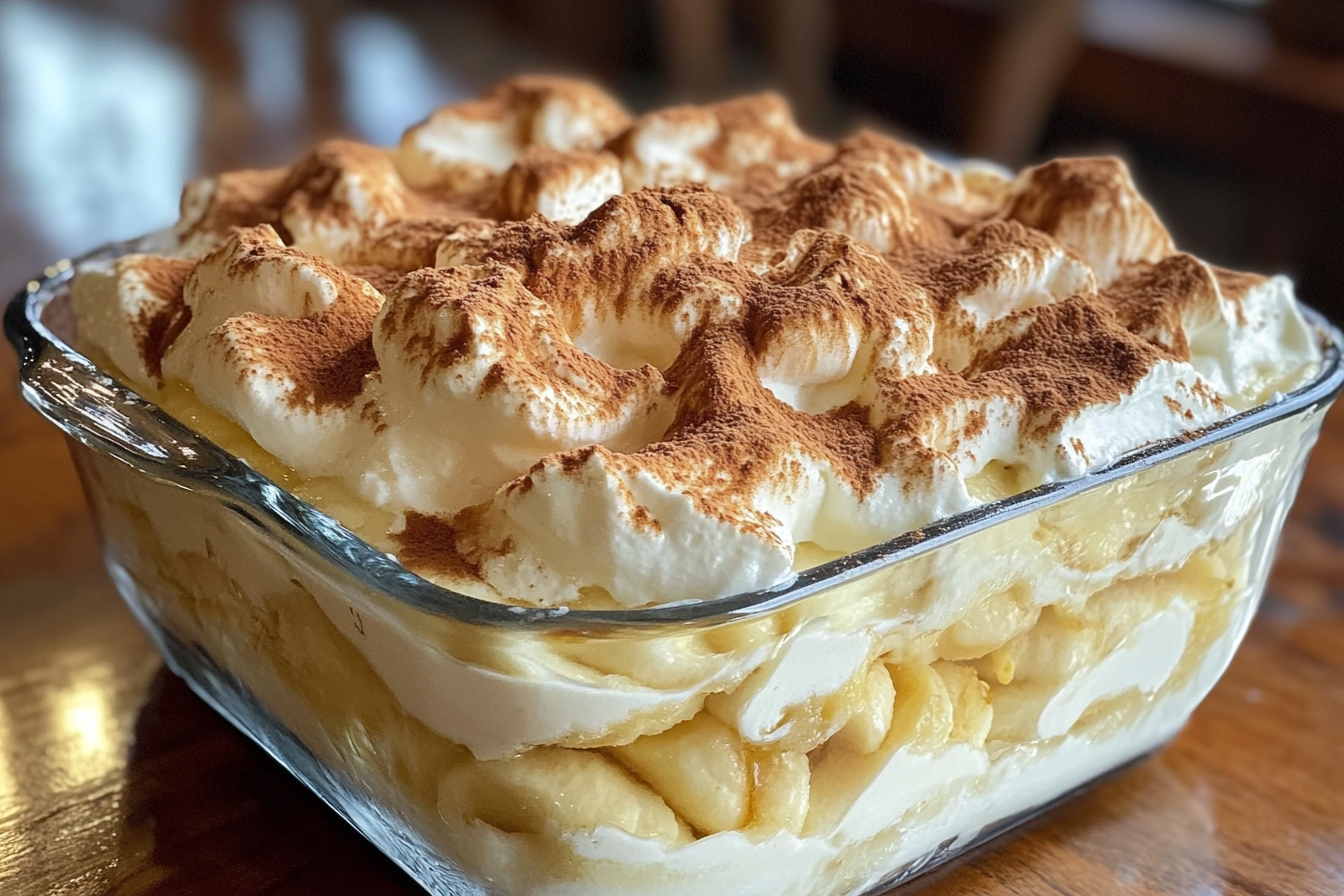What Keeps Bananas from Turning Brown in Banana Pudding?
Banana pudding is one of the most beloved desserts, often enjoyed at family gatherings, BBQs, and special occasions. Its creamy layers of pudding, cookies, and fresh banana slices make it a decadent yet simple treat. However, one issue many face when preparing banana pudding is preventing the bananas from turning brown, which can ruin the dessert’s visual appeal and freshness. In this comprehensive guide, we’ll explore the reasons bananas brown, how to prevent it, the best methods to keep your bananas looking fresh, and storage tips. You’ll also find FAQs and common mistakes to avoid.
Why Do Bananas Turn Brown in Banana Pudding?
Bananas are highly susceptible to browning due to a process called oxidation. When bananas are sliced, the enzymes in the fruit, particularly polyphenol oxidase, react with oxygen in the air. This reaction turns the flesh of the banana brown. While this doesn’t necessarily affect the taste right away, it certainly impacts the presentation of the dessert.
In banana pudding, the bananas are sandwiched between layers of pudding and cookies. However, even in this semi-sealed environment, oxygen is still present, which speeds up the oxidation process. The moisture in the pudding also adds to the bananas’ quick discoloration.
To combat this, cooks use a variety of methods to delay oxidation, keeping the bananas looking fresh for as long as possible.
For more about how oxidation affects fruits, check out the Ultimate Guide to Chocolate, which explores similar processes in different foods and how to preserve freshness.
Methods to Prevent Bananas from Browning in Banana Pudding
There are several tried-and-true methods to prevent bananas from browning, ensuring that your pudding looks fresh and appetizing. Here are the most effective ones:
1. Applying Citrus Juice
One of the simplest and most popular ways to prevent bananas from browning is to coat them with citrus juice. The acid in citrus fruits, particularly lemon or lime juice, slows down the oxidation process. Here’s how you can do it:
- After slicing the bananas, lightly toss them in freshly squeezed lemon or lime juice.
- Make sure the bananas are evenly coated but not soaked in the juice.
- Layer the bananas in the pudding immediately after coating them to minimize exposure to air.
While lemon or lime juice is effective, it can alter the flavor of the bananas slightly, giving them a tart taste. For a less noticeable flavor change, you can use orange juice or dilute the citrus juice with a little water.
2. Coating Bananas with Sugar or Syrup
Another effective way to protect the bananas from turning brown is to coat them with sugar or a simple syrup. Sugar acts as a barrier between the fruit and the air, reducing the rate of oxidation. Here’s how to use this method:
- Lightly sprinkle sugar over the sliced bananas and gently toss them until they are evenly coated.
- You can also make a simple syrup by combining equal parts sugar and water. Lightly brush the syrup over the banana slices to create a protective layer.
This method not only keeps the bananas from browning but also adds a touch of sweetness that enhances the dessert’s overall flavor.
For more on how sugar plays a role in preserving food, you might want to explore How to Make Consommé Step-by-Step Guide, where similar techniques are applied to other dishes.
3. Using Fruit Preservers
Commercial fruit preservatives, like Fruit-Fresh, are available to help prevent fruits from browning. These products are typically made from citric acid and other natural preservatives that slow the oxidation process. To use:
- Sprinkle the preservative over the sliced bananas, following the instructions on the packaging.
- Ensure the bananas are evenly coated before adding them to the pudding.
While preservatives can be effective, they may slightly alter the flavor of the fruit. However, for those who need a reliable and quick solution, this method works well.
Choosing the Right Bananas for Banana Pudding
When making banana pudding, the stage of ripeness of the bananas can significantly impact how quickly they brown. Here’s how to select the best bananas for your dessert:
1. Opt for Firm, Slightly Under-ripe Bananas
Bananas that are just starting to ripen—yellow with slight green at the tips—are ideal for banana pudding. These bananas are less likely to brown as quickly as fully ripe bananas and will hold their shape better within the layers of pudding.
- Firm bananas will maintain their texture longer in the pudding and resist turning mushy.
- Bananas that are too green, however, may lack the desired sweetness, so finding the right balance is key.
2. Avoid Overripe Bananas
While overripe bananas are sweeter, they are much more prone to browning and becoming mushy. Using bananas that have a lot of brown spots or are very soft will result in a less visually appealing dessert, and the texture of the pudding may become compromised.
Storing Banana Pudding Properly
Once the banana pudding is made, proper storage is crucial to maintaining freshness. Follow these tips to store your pudding in the best condition:
1. Use an Airtight Container
Whether you’re making the pudding in a large dish or individual servings, covering the dessert is essential. Oxygen exposure speeds up the oxidation process, so placing the pudding in an airtight container or covering it tightly with plastic wrap will minimize air exposure.
- When using plastic wrap, make sure it touches the surface of the pudding to prevent a skin from forming and to protect the bananas from air.
2. Refrigeration
Banana pudding should always be stored in the refrigerator. The cooler temperature slows down the browning process and keeps the pudding fresh for a longer period.
- For best results, consume the pudding within 24-48 hours. After this point, even if you’ve used preventive measures, the bananas may begin to brown, and the cookies may start to soften too much.
You can learn more about preserving desserts and the importance of refrigeration in articles like Ultimate Guide to Chocolate Bars, which also covers how to store sweet treats properly.
Common Mistakes to Avoid
While there are many techniques to prevent bananas from browning, there are also common mistakes that can lead to disappointment. Here’s what to avoid:
1. Using Overripe Bananas
As mentioned earlier, overripe bananas are more likely to turn brown quickly, even if you use preventative methods. Always opt for slightly under-ripe bananas for the best results.
2. Slicing Bananas Too Thin
Thin slices of banana have more surface area exposed to air, which accelerates browning. Aim to slice your bananas thick enough to maintain their structure and reduce exposure to oxygen.
3. Not Coating the Bananas Properly
Whether you’re using lemon juice, sugar, or a fruit preservative, it’s essential to ensure that every slice is evenly coated. Any areas left uncoated will brown faster, resulting in uneven coloring throughout your dessert.
How Long Will Bananas Stay Fresh in Banana Pudding?
When made and stored properly, banana pudding can stay fresh for up to 48 hours. Here’s what to expect:
- First 24 Hours: The bananas will remain vibrant and fresh if you’ve used lemon juice, sugar, or a fruit preservative. The cookies will also maintain their crispness.
- After 48 Hours: The bananas may begin to brown slightly, even with preventive measures. The cookies may also become softer as they absorb moisture from the pudding.
For events where presentation is key, such as parties or family gatherings, it’s best to prepare and serve the pudding within 24 hours of assembly. This ensures that the bananas remain fresh and appealing.
Variations of Banana Pudding to Prevent Browning
If you’re looking for creative ways to enjoy banana pudding without worrying about the bananas browning, here are some alternative ideas:
1. Use Dehydrated Banana Chips
Instead of fresh bananas, try layering dehydrated banana chips into your pudding. These chips won’t brown, and they add a pleasant crunch to the dessert. While the flavor differs slightly from fresh bananas, it’s a great way to enjoy the dessert for longer periods without worrying about browning.
2. Frozen Bananas
Another option is to use frozen banana slices. These can be thawed slightly before adding to the pudding. While freezing doesn’t stop browning entirely, it can slow the process significantly, allowing you to prepare the dessert ahead of time without sacrificing freshness.
FAQs
Can I make banana pudding ahead of time?
Yes, you can make banana pudding ahead of time, but to prevent the bananas from browning, it’s best to add them just before serving. If you need to assemble the entire dish ahead of time, make sure to use one of the methods outlined above to keep the bananas fresh.
Why do bananas brown faster in pudding than when stored alone?
The moisture in the pudding creates an environment where oxidation occurs faster, especially since the pudding is not airtight. This accelerates the browning process compared to bananas stored whole or unpeeled.
What’s the best way to store banana pudding?
Always store banana pudding in an airtight container in the refrigerator. For best results, place plastic wrap directly on the surface of the pudding to limit air exposure.
Can I use other fruits in place of bananas?
Yes, if you want to avoid the issue of browning altogether, you can replace bananas with other fruits such as strawberries, which don’t oxidize as quickly. Just be sure to adjust the sweetness level of the pudding to accommodate the change in fruit.
Conclusion
Keeping bananas from turning brown in banana pudding can be challenging, but with the right techniques—such as using citrus juice, sugar coatings, and proper storage—you can maintain the fresh appearance of your dessert for up to 48 hours. By choosing slightly under-ripe bananas, preparing them just before serving, and storing the pudding correctly, you’ll ensure that your banana pudding is as visually appealing as it is delicious.
For more dessert-related tips and guides, be sure to visit Lolyta Recipes, where you’ll find everything from banana pudding variations to expert advice on creating the perfect dessert.

